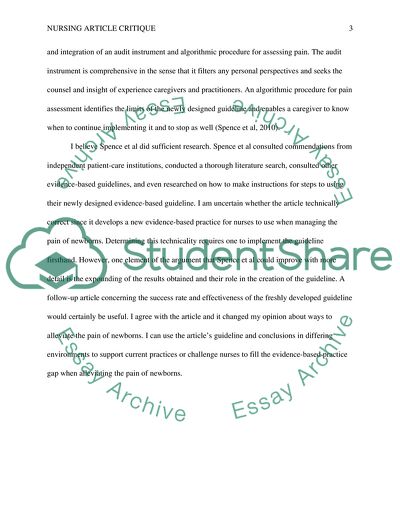Nursing Article Critique Example | Topics and Well Written Essays - 500 words. https://studentshare.org/medical-science/1870087-evidenced-based-clinical-practice-guideline-for-management-of-newborn-pain
Nursing Article Critique Example | Topics and Well Written Essays - 500 Words. https://studentshare.org/medical-science/1870087-evidenced-based-clinical-practice-guideline-for-management-of-newborn-pain.


